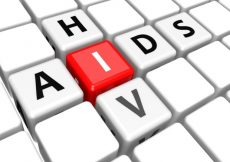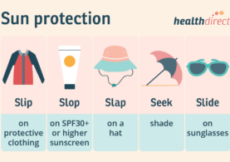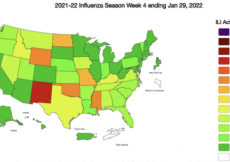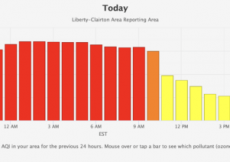In a June 27, 2022 announcement, the American Academy of Pediatrics (AAP) released new recommendations supporting mothers to continue breastfeeding for two years or beyond. These recommendations align with guidelines provided by the World Health Organization (WHO), the American Academy of Family Physicians (AAFP), and the Canadian Pediatric Society.
Study: Breastfeeding and the Use of Human Milk. Image Credit: NAR Studio / Shutterstock.com
Breastfeeding duration
The recent guidelines published by the AAP are supported by several previous studies confirming that the nutritional content of breast milk remains relatively consistent into the second year of life. Although zinc and potassium levels appear to be reduced during the second year of life, total protein content, as well as lactoferrin, lysozyme, and immunoglobulin A (IgA) levels appear to increase.
The AAP recommends that mothers breastfeed their infants for a minimum of six months.
By six months of age, parents can begin to introduce complementary feeds into the diet; however, complementary feeds introduced before six months do not appear to provide any benefit to infant growth. In fact, previous studies have found that complementary feeds introduced before four months of age can increase the child’s risk of being overweight or obese.
Breastfeeding improves infant health outcomes
Breast milk provides essential nutrients that support infant growth, of which include energy, protein, non-protein nitrogen, lactose, and fat. Human breast milk also consists of a wide range of antimicrobial, anti-inflammatory, and immunoregulatory biomolecules and living cells that support the development of the infant’s immune system.
Breastfeeding has also been shown to reduce the risk of lower respiratory tract infections, severe diarrhea, otitis media, asthma, eczema, Crohn’s disease, ulcerative colitis, type 1 and type 2 diabetes, leukemia, and obesity in infants. Moreover, a 40%, 60%, and 64% reduced risk of sudden infant death syndrome (SIDS) has been reported in breastfed infants who are between two to four months, four to six months, and over six months of age, respectively.
Maternal benefits of breastfeeding
In addition to the benefits conferred to the breastfeeding infant, there are several advantages that breastfeeding beyond the minimum of six months also offers to the mother. For example, several studies have found that breastfeeding for extended durations of up to three years can increase maternal attachment in terms of the mother’s ability to read infant cues, as well as the responsiveness of the mother to the infant.
Several studies have also found that breastfeeding for more than 12 months can reduce the risk of diabetes mellitus, hypertension, breast cancer, and ovarian cancer in the mother by about 30%, 10%, 10-30%, and up to 37%, respectively. Reduced risk of endometrial and thyroid cancers has also been reported in breastfeeding mothers by 11% and 9%, respectively.
Factors limiting the duration of breastfeeding
In the United States, over 80% of women will initiate breastfeeding; however, recent estimates suggest that up to 60% of mothers in the United States are not able to breastfeed for as long as they had originally intended to. Despite AAP recommendations that mothers breastfeed infants for a minimum of six months, only about 56.7% of mothers appear to reach this goal.
Some of the factors that limit a mother’s ability to breastfeed for extended durations include latch issues, the infant’s weight, or concerns about medications the mother is taking entering the breast milk. Additionally, a lack of parental or family support, as well as cultural norms, may also limit a woman’s ability to continue breastfeeding.
In the United States, both federal and state laws protect a woman’s right to breastfeed and express milk, both in public and in the workplace. Nevertheless, unsupportive work policies reduce the ability of mothers to continue breastfeeding after returning to work.
How to support breastfeeding mothers
Workplaces that support breastfeeding mothers can also benefit from these efforts, as evidenced by reduced company healthcare costs, lower employee absenteeism, reduced employee turnover, and increased employee morale and productivity. In fact, recent estimates indicate that for every $1 invested into creating a supportive work environment for the breastfeeding mother, there is a $2 to $3 return.
Some of the different ways in which workplaces can enhance the breastfeeding experience for mothers include the establishment of a designated place to express milk, the availability of refrigeration and hand-washing facilities, as well as providing the mother with sufficient break time to allow for milk expression.
The recent update to APP guidelines on breastfeeding also recommends that both hospitals and birth centers implement maternity care practices to improve the initiation, duration, and exclusivity of breastfeeding. Some of these measures may include skin-to-skin contact between the mother and infant for at least 30 minutes and initiating breastfeeding within the first hour of life after an uncomplicated vaginal birth.
Additional practices that appear to improve exclusive breastfeeding include breastfeeding on demand, the avoidance of pacifiers, as well as the dissemination of information on breastfeeding support to the parents after discharge.
At the federal and state level, various policies can be enacted to support and protect breastfeeding. These include universal paid maternity leave, enforcing the right of a woman to breastfeed in public, insurance coverage for lactation consultation and mechanical pumps, as well as mandating universal workplace breaks with clean and private locations for expressing milk.
Journal references:
- Meek, J. Y., & Noble, L. (2022). Brestfeeding and the Use of Human Milk. The American Academy of Pediatrics. doi:10.1542/peds.2022-057989.
- Grote, V., Verduci, E., Scaglioni, S., et al. (2016). Breast milk composition and infant nutrient intakes during the first 12 months of life. European Journal of Clinical Nutrition 70; 250-256. doi:10.1038/ejcn.2015.162.



































